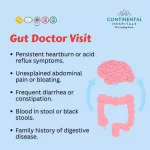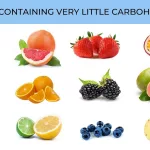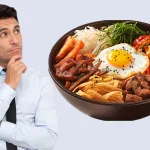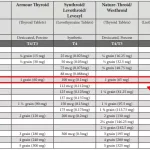
Let’s Get Real for a Second
Alright—be honest: have you ever stood in front of your fridge the night before a big doctor’s appointment, tummy doing its own circus routine, while you debate if you can sneak in just one cracker? (Story of my life—except for me, it was a slightly embarrassing, cheese-laden midnight snack before a morning “no food!” appointment. Oops.)
This isn’t just you. So many of us get tripped up by the “can I eat before a gastroenterology appointment?” question, and for good reason—it’s not like anyone hands you a play-by-play rulebook attached to your referral slip. But let’s cut through the confusion together. Get comfy, take a breath (seriously, I know this can be stressful), and let’s run through what actually happens, what’s allowed, and all those tiny “wait, what?!” moments—because you deserve to walk in feeling prepped, not panicked.
Why the Fuss About Eating, Anyway?
You’d think: “It’s just a little food, what could possibly go wrong?” Turns out, even a little risk of leftover breakfast can turn the doctor’s mission impossible into, well, actual mission impossible. Here’s the thing: your digestive system is like a tunnel. If it’s packed with mystery snacks, doctors can’t see what’s really happening, which can mess up the answers you want and need.
But don’t tune out—there’s more than one kind of gastro visit, and that totally changes things. Promise, this isn’t just a blanket “no food allowed” doom. It actually depends. A lot.
Routine Visit Versus Procedures: Which Are You Facing?
You might have a regular check-in where you talk symptoms, review your story, and plot your next steps. You also might be heading for some kind of “scopy”: upper endoscopy, colonoscopy, gastroscopy…you get the idea. Those aren’t casual appointments—they’re more like “your stomach’s going live on TV” moments.
| Appointment Type | Can You Eat? | Why It Matters |
|---|---|---|
| Simple Consultation | Yep, eat as usual! | Your doctor’s just getting your story. No food rules. |
| Endoscopy / Colonoscopy | Usually, NO—fast! 6–8 hours minimum | Food messes with the camera and can lead to canceled or less effective procedures. |
So…if you’re wondering, “Can I eat before a gastroenterology appointment?”, the short, messy answer is: consults = yes, procedures = sorry, no snacks allowed. But let’s go deeper, because real life is never that simple.
Prep Steps: When to Skip the Snack
Ever notice how doctors, nurses, and the internet each tell you a slightly different rule about eating before appointments? Some say midnight, some say eight hours, some say clear liquids. Here’s the deal: for most upper endoscopies (yep, the “scope” through your mouth or nose), the official play-by-play usually goes something like this:
- No solid food for 6–8 hours before your procedure.
- Some clear liquids (like water, apple juice, plain tea—hold the milk!) are allowed up until 2–4 hours before. That’s it.
- No alcohol. No fizzy sodas. No “just a nibble.”
If you’re prepping for a colonoscopy, you’ll get an even bigger list: special diets, a “prep” drink, a liquid-only day, and possibly a warning about eating Skittles (not joking—some food coloring can mess with results). The specifics? They depend on your procedure and your doc’s style. I’ve seen letters that say “midnight cutoff,” and others that say “breakfast OK if your endoscopy is in the afternoon.” Always check. Call the office if you have doubts. They’ve heard every snack-related question you can imagine!
If your appointment is just a chat—maybe it’s the What will the gastroenterologist do on first visit kind—you can usually eat as you like. Just don’t bring the garlic fries. (For everyone’s sake.)
What Really Happens If You Eat?
I know, it’s tempting to think, “They’ll never know if I sneak one slice of toast.” Reality? It matters more than you think. Years ago, a friend of mine (let’s call her Molly) tried a secret bagel before her morning endoscopy. The nurse found food in her stomach and said, “We can’t do the test—it’s not safe.” No test, no answers, wasted time. She had to reschedule and start the fasting all over again. (She still regrets that bagel.)
It sounds strict, but there’s a reason: food can block the doctor’s view and—way scarier—it risks regurgitation while you’re sedated, which can be dangerous. No appointment or answer is worth risking that.
For more on the nitty-gritty of these days, check out What happens at a gastroenterology appointment—it’s surprisingly reassuring.
Let’s Talk Clear Liquids (and What the Heck Does That Even Mean?)
Have you ever laughed reading “You may have clear liquids only” and then stared dumbfounded at your kitchen—like, what counts? Is Gatorade clear? How about chicken soup? (Hint: Only if it’s, well, see-through.)
Clear liquids simply means anything you can literally see through at room temp. So, water, apple juice, plain tea (hold the cream), clear broth, and plain Jell-O all make the cut. Skip anything red, purple, or blue, though. Those colors can show up during procedures and confuse the results. Sorry, blueberry Jell-O, you’re just too complicated.
Clear Liquid Quick List
- Water (flavored if it’s see-through is sometimes okay!)
- Apple juice or white grape juice
- Plain tea or coffee—absolutely no milk
- Clear sodas (Sprite, ginger ale—but check your instructions)
- Plain, strained broth (no noodles, no pieces, just clear soup)
- Jell-O that’s not red or purple
Short story here: I once drank a “clear” sports drink for my prep, only to realize the label said “contains food dyes.” The nurse looked at my tongue and said, “Grape, huh?” Try explaining that… Lesson: read your drink labels closely.
How Early Should You Start Prepping?
Here’s the timeline stuff everyone forgets to talk about! Really, the main event is that final 6–8 hour food cutoff, but some procedures work better if you ease up on rich, heavy meals in the 24–48 hours before. Doctors sometimes say, “Eat light for a day or two before”—think chicken, rice, yogurt, and soup, not a pound of ribs or a triple-bean burrito.
Of course, if your doc sends you a prep sheet, trust that over internet wisdom. But if you’re unsure, stick to simple, gentler foods and hydrate with water. Your body will thank you, even if you’re secretly craving that leftover pizza.
Writing Down Your Story: The Best Prep Nobody Talks About
If your visit is less “scope” and more “let’s figure this out,” then food isn’t the star—you and your symptoms are. Jot down your food diary (yes, details!), your weirdest symptoms, the foods that make you bloat, and the times you felt worst or best. This is gold for your doctor. What will the gastroenterologist do on first visit is a peek into how that info helps your doctor actually help you.
I once handed my doc a messy symptom journal at my first appointment—honestly, she looked a little surprised, but it made the whole visit ten times smoother. There’s power in little details.
Don’t Forget the Rest of Your Prep Game
“No food” is just one part of your warm-up act. Are you on meds? Ask if you can take them—sometimes a tiny sip of water is fine for a morning pill, sometimes you’ll be told to skip altogether. If you’re taking blood thinners or iron, your doc may want you off those early. And… this one’s awkward, but true: go clean. A shower or bath before your appointment helps keep things comfortable for everyone (and hey, it’s kind of a reset).
Some more appointments, especially those involving sedation, need you to bring a ride—or a ride-home buddy. No exceptions. I once thought, “I feel fine, I can take myself home!” …Only to realize walking down the hallway felt like trying to win a gold medal in slow-motion Olympics. Napping in the car after was the highlight of my day.
Nurses will also remind you: no lotions, no heavy makeup, no jewelry—it keeps things hygienic and stops anything from interfering with monitors.

Why So Much Emphasis on Getting this Right?
It’s simple: prepping right means no delays, no surprises, and the best answers possible. If you eat close to your procedure—say, you couldn’t resist that granola bar at midnight—you might wake up to a canceled appointment. Not the vibe anyone wants (“Sorry, you’ll have to come back next week and fast again…” Ugh.).
If you’re still feeling iffy, call your team, email, or even bring your snack question to the front desk. They want you to get it right as much as you do! And, always double-check what actually happens by reading What happens at a gastroenterology appointment for more peace of mind.
Personal Anecdote: When It’s All Worth It
I know this sounds like a bit of a fuss, but every gastroenterology appointment is a chance to actually get answers to your digestive dramas. Years ago, I struggled with bloating that made me rethink every meal. That nerve-wracking, food-free prep led to a diagnosis and, honestly, the relief I needed. Whether you’re walking in for a “let’s talk” consult or prepping for a full-on procedure, showing up ready means you can finally get to the truth of what’s going on in your gut. (And maybe say goodbye to emergency bathroom runs. Fingers crossed, right?)
End Notes & The Big Takeaway
So, let’s circle back to that fridge panic. Can I eat before a gastroenterology appointment? If you’re going in for a simple conversation or health history? Sure, just be comfortable. But if you’re booked for an endoscopy or colonoscopy—those more technical, camera-laden adventures—no food for 6–8 hours, clear liquids only, and absolutely stick to your provider’s directions.
Bring your questions, your journals, and a friend (or at least a good book). Remember, this is about helping you feel better. You matter—the doctor’s directions aren’t just tests, they’re the clues to getting you back to feeling like yourself again.
Feeling nervous? Totally normal. Unsure about something? Ask (and keep asking until you’re certain). Each question you have is one step closer to comfort—actual digestive peace. And hey, if all else fails, remember: this stuff isn’t just about rules, it’s about you, your story, and giving your body the break and answers it deserves.
Now—set those reminders, stash that snack for later, and walk into your appointment knowing you’re fully prepped. You’ve got this. And if you want a peek ahead, check out What will the gastroenterologist do on first visit. Go ahead—let your next visit be the one where you get real answers, minus the mystery (and with your fridge fully stocked for when you get home, of course!).


















Leave a Reply
You must be logged in to post a comment.